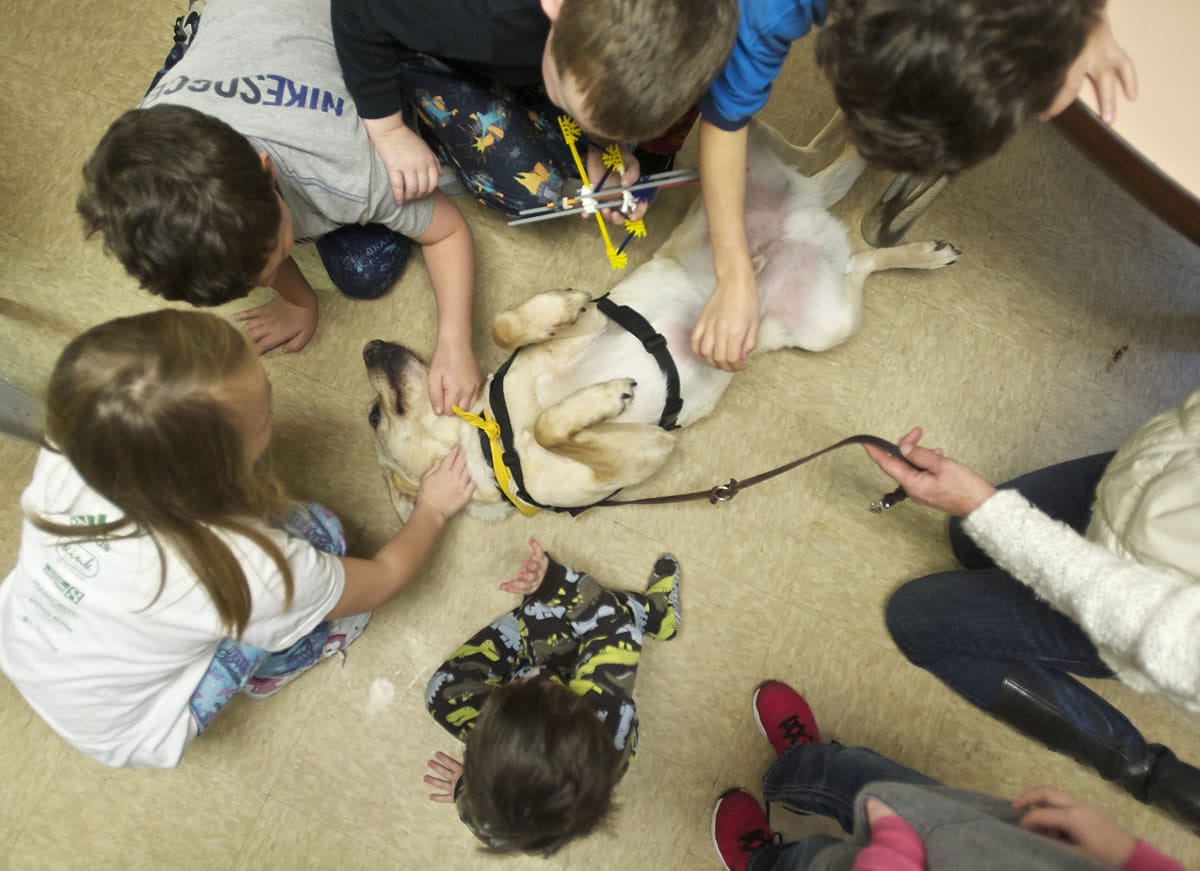Did you know?
Each litter of guide dogs is named based on a different letter of the alphabet — Art was in the “A” litter. To prevent two dogs from having the same name, a dog’s name can’t be used until the dog retires, dies or changes careers. So “Art” was thrown back into the name pool once Art became a therapy dog.
Pet benefits
Pets have been shown to …
o Improve people’s self-esteem.
o Lower blood pressure.
o Reduce anxiety, fatigue and depression.
o Improve recovery from heart disease.
o Reduce rates of asthma and allergy in children.
o Steady rapid breathing.
Source: DoveLewis Emergency Animal Hospital and Harvard Medical School
Twenty-month-old Leland Kasinger waddled over to the yellow Labrador retriever and plopped down next to him, allowing the dog to cover his face in kisses.
“I’ve never seen my son interact with an animal that well,” said Rebecca Kasinger, 29. “He has sensory processing disorder.”
She explained that her son doesn’t like grass, sleeps only with blankets made of certain fabrics and throws tantrums over wrinkles in his socks. He was diagnosed with the disorder about three months ago. But the bumbling baby seemed at ease as he stroked the 3-year-old dog’s smooth coat.




